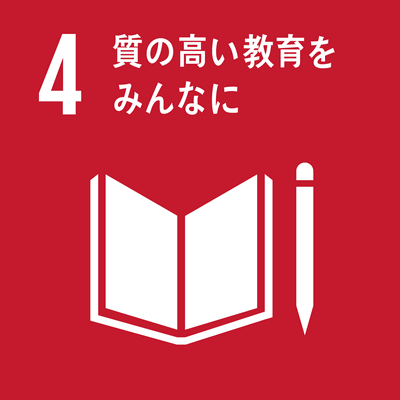シラバス表示
シラバスの詳細な内容を表示します。
→ 閉じる(シラバスの一覧にもどる)
科目の基本情報
| 開講年度 | 2023 年度 | |
|---|---|---|
| 開講区分 | 工学部機械工学科/総合工学科機械工学コース ・専門教育 | |
| 受講対象学生 |
学部(学士課程) : 3年次 工学部機械工学科 |
|
| 選択・必修 | 選択 コース選択 |
|
| 授業科目名 | 応用電子論 | |
| おうようでんしろん | ||
| Applied Electron Theory | ||
| 単位数 | 2 単位 | |
| ナンバリングコード | EN-SYST-3
|
|
| 開放科目 | 開放科目
他専攻の学生の受講可, 自専攻の学生の受講可, 他研究科の学生の受講可, 自研究科の学生の受講可, 他講座の学生の受講可, 他類の学生の受講可, 他学科の学生の受講可, 他学部の学生の受講可 |
|
| 開講学期 |
前期 |
|
| 開講時間 |
水曜日 3, 4時限 |
|
| 授業形態 |
ハイブリッド授業 * 状況により変更される可能性があるので定期的に確認して下さい
「オンライン授業」・・・オンライン会議ツール等を利用して実施する同時双方向型の授業 |
|
| 開講場所 | 工学研究科の教室 または zoomによる遠隔授業 | |
| 担当教員 | 小竹 茂夫(工学研究科機械工学専攻) | |
| KOTAKE, Shigeo | ||
| SDGsの目標 |
|
|
| 連絡事項 | * 状況により変更される可能性があるので定期的に確認して下さい |
|
学修の目的と方法
| 授業の概要 | 工学において、実際の材料がもつ様々な性質を理解することは、大変重要である。物の性質(物性)がどのように決まっているのか、材料によってどのように違うかを理解することは、機械エンジニアが適切な設計を行う上でも、機械の性能を理解するうえでも必須の知識となる。本講義では、様々な物の性質を取り上げ、量子力学,電子論や統計力学、熱力学、電磁気学を背景とした物性論の理解を通して、それらの概要を講義する。基本的には式を追うだけの授業はせず、基本的な性質がどのような仕組みから発現するかの定性的な説明に心がけたい。 In engineering, it is very important to understand the various properties of real materials. Understanding how the properties (physical properties) of a matter are determined and how it differs depending on the material is essential knowledge for a mechanical engineer to properly design and understand machine performance. It becomes. In this lecture, we will take up the properties of various objects and give an overview of them through an understanding of physical properties in the background of quantum mechanics, electron theory, statistical mechanics, thermodynamics, and electromagnetics. Basically, I don't want to teach only the ceremony, but try to give a qualitative explanation of how the basic properties emerge. |
|---|---|
| 学修の目的 | 量子力学、電子論の理解が深まり、固体物理学を学ぶ基礎的能力が身に付く。 The understanding of quantum mechanics and electron theory deepens, and the basic ability to learn solid state physics is acquired. |
| 学修の到達目標 | ・結晶構造を理解できる。 ・イオン結合、共有結合、金属結合など、物質の結合様式が理解できる。 ・固体内部の電子構造として、自由電子モデルやフェルミ面が理解できる。 ・結晶による波の回折である固体のバンド構造やX線回折が理解できる。 ・半導体のバンド構造や真性半導体、不純物半導体が理解できる。 ・金属や半導体の電気伝導度が理解できる。 ・固体の界面や表面の物性である、p-n接合が理解できる。 ・熱現象をフォノンのk空間での分布から理解できる. ・黒体放射をフォトンのk空間での分布から理解できる. ・ Understand the crystal structure. ・ Understand the bonding modes of substances such as ionic bonds, covalent bonds, and metal bonds. ・ Understand the free electron model and Fermi surface as the electronic structure inside the solid. ・ Understand the band structure and X-ray diffraction of solids, which are diffractions of waves by crystals. ・ Understand the band structure of semiconductors, intrinsic semiconductors, and impurity semiconductors. ・ Understand the electrical conductivity of metals and semiconductors. ・ Understand the physical properties of the solid interface and surface, such as p-n junction. ・ Understand thermal phenomena from the distribution of phonons in k-space. ・ Blackbody radiation can be understood from the distribution of photons in k-space. |
| ディプロマ・ポリシー |
|
| 成績評価方法と基準 | *期末試験がオンラインになった場合:授業のレポート(p:20点),出席や質問(q:10点)と期末試験(r:100点)により、100 * (p+q+r) / 140 の評価点(100満点)によって総合的に判断します。 *期末試験が対面になった場合:授業のレポート(p:20点),出席や質問(q:10点)と期末試験(r:100点)により、100 * (p+q+r) / (p+q+100) の評価点(100満点)によって総合的に判断します。 * If the final exam is online: class report (p: 20 points), attendance and questions (q: 10 points) and final exam (r: 100 points), 100 * (p + q + r) / Comprehensive judgment based on 140 evaluation points (out of 100). * If the final exam is face-to-face: 100 * (p + q + r) / by class report (p: 20 points), attendance and questions (q: 10 points) and final exam (r: 100 points) (p+q+100) will be comprehensively judged by the evaluation score (out of 100). |
| 授業の方法 | 講義 |
| 授業の特徴 |
Moodleを活用する授業 |
| 授業改善の工夫 | ・毎回,授業前にレジュメを配り,その日の授業のまとめや課題を示す.休んだ学生の便宜をはかるために,レジュメをMoodleで提供する. ・授業の板書を書画カメラを用いることで記録し,Moodleで学生に提供する.これにより受講生の復習をしやすくする. ・授業後にMoodleで小テストを行い,理解の定着を図る. ・質問や連絡をMoodleでおこない,受講生全体に行き渡るようにする. ・正当な理由があって休んだ学生の便宜をはかるために,要請があった場合には,講義のビデオを視聴できるようにする. ・Every time, a resume is distributed before class, showing a summary of the day's class and assignments. For the convenience of absent students, resumes are provided in Moodle. ・Record the blackboard in class using a document camera and provide it to students in Moodle. This makes it easier for students to review. ・A quiz will be given in Moodle after the class to establish understanding. ・Use Moodle to ask questions and communicate with other students so that they can reach out to all students. ・For the convenience of students who are absent for valid reasons, videos of lectures will be made available upon request. |
| 教科書 | 特に教科書は定めず,オリジナルな講義を行う. 各自,自分に合った参考書を購入ください. Original lectures are given without specific textbooks. Please purchase your own reference book. |
| 参考書 | 数多くの固体物理関連の教科書があるが、 図書館のe-book libraryにあります 「電子物性 新版」 松澤, 剛雄/高橋, 清/斉藤, 幸喜(著) 森北出版 ISBN 9784627772021 をお薦めします.図書館のHPの丸善e-book libraryから各自ダウンロードください. 後期の「応用量子論」でも,同じ教科書を薦めます. 他にも,入門書としては 「初歩から学ぶ 固体物理学」 (矢口裕之著 講談社)や 「固体物性入門 例題・演習と詳しい解答で理解する」(沼居貴陽著、森北出版)や 「材料科学3」(C.R.バレット他著、培風館、絶版?)がよい。 また高度だが良い参考書として, 「固体物理学入門(上)および(下)」(キッテル著、丸善) 「熱物理学」キッテル著,丸善がある. この他にも, したしむ固体構造論 (したしむ物理工学) 志村史夫著 朝倉書店 (Maruzen eBook Library) したしむ電子物性 (したしむ物理工学) 志村史夫著 朝倉書店 (Maruzen eBook Library) したしむ表面物理 (したしむ物理工学) 志村史夫著 朝倉書店 (Maruzen eBook Library) したしむ磁性 (したしむ物理工学) 小林久理眞 著 朝倉書店 (Maruzen eBook Library) 多体問題 ―電子ガス模型からのアプローチ―(朝倉物理学大系 9)高田康民著 朝倉書店 (Maruzen eBook Library) 多体問題特論 ―第一原理からの多電子問題―(朝倉物理学大系 15) 高田康民著 朝倉書店 (Maruzen eBook Library) 納得しながら電子物性 (納得しながら学べる物理シリーズ 4)(※) 岸野正剛著 朝倉書店 (Maruzen eBook Library) を挙げる. |
| オフィスアワー | 毎週月曜日12:20~14:30に機械棟2階小竹教員室にて対応する.電子メールによる質問を歓迎する. Every Monday from 12:20 to 14:30, I will respond in the Kotake teacher's room on the second floor of the machine building. I welcome e-mail questions. |
| 受講要件 | 特になし. nothing special. |
| 予め履修が望ましい科目 | この授業は「量子力学」の知識の上に実際の物質の性質を議論し、固体物理の分野に発展させる。 This class discusses the properties of actual materials based on the knowledge of "quantum mechanics". |
| 発展科目 | 学部では,「応用量子論」で,大学院では「固体物理特論」,「固体物理演習」,「量子応用特論」,「極限物性特論」,「極限物性演習」としてさらに詳しく学ぶ。 In undergraduate courses, students study "Applied Quantum Mechanics", and in graduate schools they study "Solid State Physics", "Seminar in Solid State Physics", "Physics of Extreme Materials", and "Solid State Physics under Extreme Environment". |
| その他 |
・講義の連絡はMoodleを通じて連絡しますので,登録を御願いします。 ・レジュメは,Moodel内にpdfの形で置いてあります。なくした人は取って行ってください。 ・正当な理由があって休んだ場合は,連絡をください.講義のビデオを公開します. ・Lectures will be communicated through Moodle, so please register. ・ The resume is in pdf format in Moodel. If you lose, please take it away. ・If there is a legitimate reason for taking a day off, please let us know. Lecture videos will be released. |
授業計画
| MoodleのコースURL |
https://moodle.mie-u.ac.jp/moodle35/course/view.php?id=262 |
|---|
| キーワード | 物質の理解の歴史,結晶格子,結晶面とX線回折,結晶の結合力,自由電子論, 準自由電子論,バンドギャップとバンド構造,有限温度での量子粒子の分布, 金属と半導体の電気伝導度,不純物半導体,電子デバイス,フォノン, 熱物性,黒体輻射,熱伝導 |
|---|---|
| Key Word(s) | history of understanding of materials, crystal lattice, crystal plane and X-ray diffraction, crystal binding force, free electron theory, semi-free electron theory, band gap and band structure, distribution of quantum particles at finite temperature, electrical conductivity of metals and semiconductors, impurity semiconductors, electronic devices, phonons, thermophysical properties, blackbody radiation, heat conduction |
| 学修内容 | 第1回講義 「物質の理解の歴史」 理性の曙=ギリシャ時代 宗教の時代=中世 科学の誕生=ルネサンス、近世 科学の発展、産業化=近代 周期律の発見 電子の発見 原子の大きさの測定 原子核の発見 ボーアの原子模型 Lecture 1: "History of Understanding Materials" Akebono of reason = Greek era Age of religion = medieval The birth of science = Renaissance, early modern times Scientific development, industrialization = modern Discovery of periodic law Electron discovery Atom size measurement Nuclear discovery Bohr's atomic model 第2回講義 「固体内部の舞台:色々な結晶」 結晶格子 単位格子の格子定数 ブラーべ格子 7 種類の結晶系 結晶構造・空間群:230 種類 最小単位格子 最密格子 結晶内の方向と面方位 Lecture 2: "Stage inside the solid: various crystals" Crystal lattice Unit cell lattice constant Brave lattice 7 types of crystal systems Crystal structure / space group: 230 types Minimum unit cell Closest grid Direction and plane orientation in crystal 第3回講義 「結晶面とX線回折」 X線とは 結晶とX線(光)の相互作用:X線回折 ブラッグの回折条件 X線の波数ベクトル ブラッグの回折条件 回折面のG ベクトルと回折点の位置:ラウエの回折条件 Lecture 3: "Crystal plane and X-ray diffraction" What is X-ray Interaction between crystal and X-ray (light): X-ray diffraction Bragg diffraction conditions X-ray wave number vector Bragg diffraction conditions G vector of diffraction surface and diffraction point position: Laue diffraction conditions 第4回講義 「結晶面とX線回折」の続き エバルトの作図法 基本並進ベクトル 逆格子ベクトル G ベクトルの逆格子ベクトル表示 Lecture 4: "Crystal plane and X-ray diffraction" Continued Ewald's construction method Basic translation vector Reciprocal lattice vector Display reciprocal lattice vector of G vector 第5回講義 「結晶の結合力」,「固体内の電子:自由電子論」 原子の電子軌道 自然界の4つの力 原子の電子軌道を決めるもの 結晶の結合力の種類 イオン結合 金属結合 共有結合 原子間ポテンシャル:物質の結合を表現する手法 固体内部の電子論 波数空間 フェルミ電子とフェルミ球とフェルミエネルギー Lecture 5: "Binding force of crystals", "Electrons in solids: Free electron theory" Atomic electron orbit The four forces of nature What determines the electron orbit of an atom Types of crystal bonding force Ionic bond Metal bonding Covalent bond Interatomic potential: A method for expressing the bond of matter Electron theory inside solids Wave number space Fermi electron, Fermi sphere and Fermi energy 第6回講義 「準自由電子論:バンドギャップとバンド構造」 バンドギャップとバンド構造 固体内部の自由電子の結晶格子による回折 ブリルアン・ゾーン・バウンダリー 固体中のバンド構造とバンドギャップ 単純立方格子の第1ブリルアン・ゾーン・バウンダリー 価電子数 Lecture 6: "Semi-free electron theory: band gap and band structure" Band gap and band structure Diffraction of free electrons inside a solid by a crystal lattice. Brillouin Zone Boundary Band structure and band gap in solids 1st Brillouin zone boundary of simple cubic lattice Valence electrons 第7回講義 「有限温度での量子粒子の分布」 有限温度における粒子の分布 2つの量子粒子と古典粒子 フェルミ粒子とボーズ粒子と古典粒子の場合の数 温度とは何か? Lecture 7: "Distribution of quantum particles at finite temperature" Particle distribution at finite temperature Two quantum particles and classical particles Fermion, Bose, and classical particle numbers What is temperature? 第8回講義 「金属と半導体の電気伝導度」 電気伝導度(電気抵抗) 金属・半導体・絶縁体による電気伝導度の違い バンド中で電気伝導に関与する電子 電気伝導度の違いを生む要因 状態密度 金属と半導体・絶縁体 金属と半導体・絶縁体の電気伝導度の違い 半導体と絶縁体の違い 電流に寄与する電子の数(nc)の温度による変化 電子の平均速度の温度による変化 様々な電子の散乱要因 Lecture 8: "Electrical Conductivity of Metals and Semiconductors" Electric conductivity (electric resistance) Difference in electrical conductivity between metals, semiconductors and insulators Electrons participating in electrical conduction in the band Factors that create differences in electrical conductivity Density of states Metals, semiconductors and insulators Difference in electrical conductivity between metal and semiconductor / insulator Difference between semiconductor and insulator Change in the number of electrons contributing to current (nc) with temperature Change in average electron velocity with temperature Various electron scattering factors 第9回講義 「不純物半導体の電子モデル」 半導体とは 半導体の種類(その1) 半導体の種類(その2) 半導体の電気伝導 電子の有効質量とキャリア移動度 半導体の結晶構造とバンドギャップ 真性半導体のキャリアー 不純物半導体(p 型半導体,n 型半導体) 不純物半導体の不純物準位 不純物半導体のフェルミ準位とキャリアー 電気的中性条件 不純物濃度が真性半導体のキャリアー濃度よりも大きいとき 電気伝導度の温度依存性 Lecture 9: "Electron Model of Impurity Semiconductors" What is a semiconductor? Types of semiconductors (Part 1) Types of semiconductors (part 2) Semiconductor electrical conduction Effective electron mass and carrier mobility Semiconductor crystal structure and band gap Intrinsic semiconductor carriers Impurity semiconductor (p-type semiconductor, n-type semiconductor) Impurity level of impurity semiconductor Fermi levels and carriers in impurity semiconductors. Electrical neutral condition When the impurity concentration is higher than the carrier concentration of the intrinsic semiconductor Temperature dependence of electrical conductivity 第10回講義 電子デバイス p-n 接合 ダイオード p-n-p 接合(n-p-n 接合)トランジスター Lecture 10: Electronic Devices p-n junction diode p-n-p junction (n-p-n junction) transistors 第11回講義 「フォノンとその分布の温度による変化」 固体のバネモデル フォノン フォノン=ボーズ粒子 振動と熱(マクロな現象)とフォノン フォノンの分散関係 固体が2 種類以上の原子からなる場合 フォノンの種類 フォノンの分布 フォノンのボーズ・アインシュタイン分布 Lecture 11: "Phonons and their distribution with temperature" Solid spring model Phonon Phonon-Bose particle Vibration, heat (macro phenomena) and phonons Phonon dispersion relation When the solid consists of two or more types of atoms Phonon types Phonon distribution Phonon Bose-Einstein distribution 第12回講義 「熱物性」 一定温度下でのフォノンの分布 熱現象におけるフォノンの状態⇒デバイモデル フォノンの全エネルギー フォノンの波数状態密度 フォノンの定積比熱 各温度でのフォノンの状態分布と比熱 各物質のデバイ温度 電子の温度変化 フォノンの圧力と熱応力 熱膨張係数 Lecture 12: "Thermophysical Properties" Phonon distribution at constant temperature Phonon state in thermal phenomena ⇒ Debye model Phonon total energy Phonon wavenumber density of states Phonon constant heat capacity Phonon state distribution and specific heat at each temperature Debye temperature of each substance Electron temperature change Phonon pressure and thermal stress Thermal expansion coefficient 第13回講義 「黒体輻射」 一定温度下での光の分布 光の波光の量子粒子=フォトン(光子) 光子=ボーズ粒子 レーザーと白色光(熱由来の光) 光子の分散関係 光子の分布 空洞内における波長の分布⇒黒体輻射 黒体 空洞内における光子の状態⇒プランクの黒体輻射モデル 光子の波数状態密度 光子のエネルギー状態密度 黒体輻射の全エネルギー 波長λ の光子のエネルギー強度 ウイーンの変位則 Lecture 13: "Blackbody radiation" Light distribution at constant temperature Quantum particle of light wave = photon (photon) Photon = Bose particle Laser and white light (heat-derived light) Photon dispersion relation Photon distribution Distribution of wavelength in cavity ⇒ Blackbody radiation Black body Photon state in cavity ⇒ Planck's blackbody radiation model Photon wavenumber density of states Photon energy density of states Total energy of blackbody radiation Energy intensity of photon of wavelength λ Vienna's displacement law 第14回講義 「熱伝導」 固体熱伝導 放射熱伝導 気体熱伝導 Lecture 14: "Heat conduction" Solid heat conduction Radiant heat conduction Gas heat conduction 第15回講義 全体のまとめと復習 レポートの回答 Lecture 15: Summary and Review Report Answer 第16回 定期試験 Regular Exam |
| 事前・事後学修の内容 | 事前学修:特に必要はありません. 事後学修:Moodleの小テストに回答ください. Moodleに掲げた板書ノートを参考に,各自の授業ノートを完成ください. レジュメの最後に記されているレポート課題を解いてください. Pre-learning: No special requirements. Subsequent study: Please answer the quiz of Moodle. Please complete your own class notebook with reference to the notebook on Moodle. Complete the report assignment at the end of the resume. |
| 事前学修の時間: 事後学修の時間:200分/回 |



